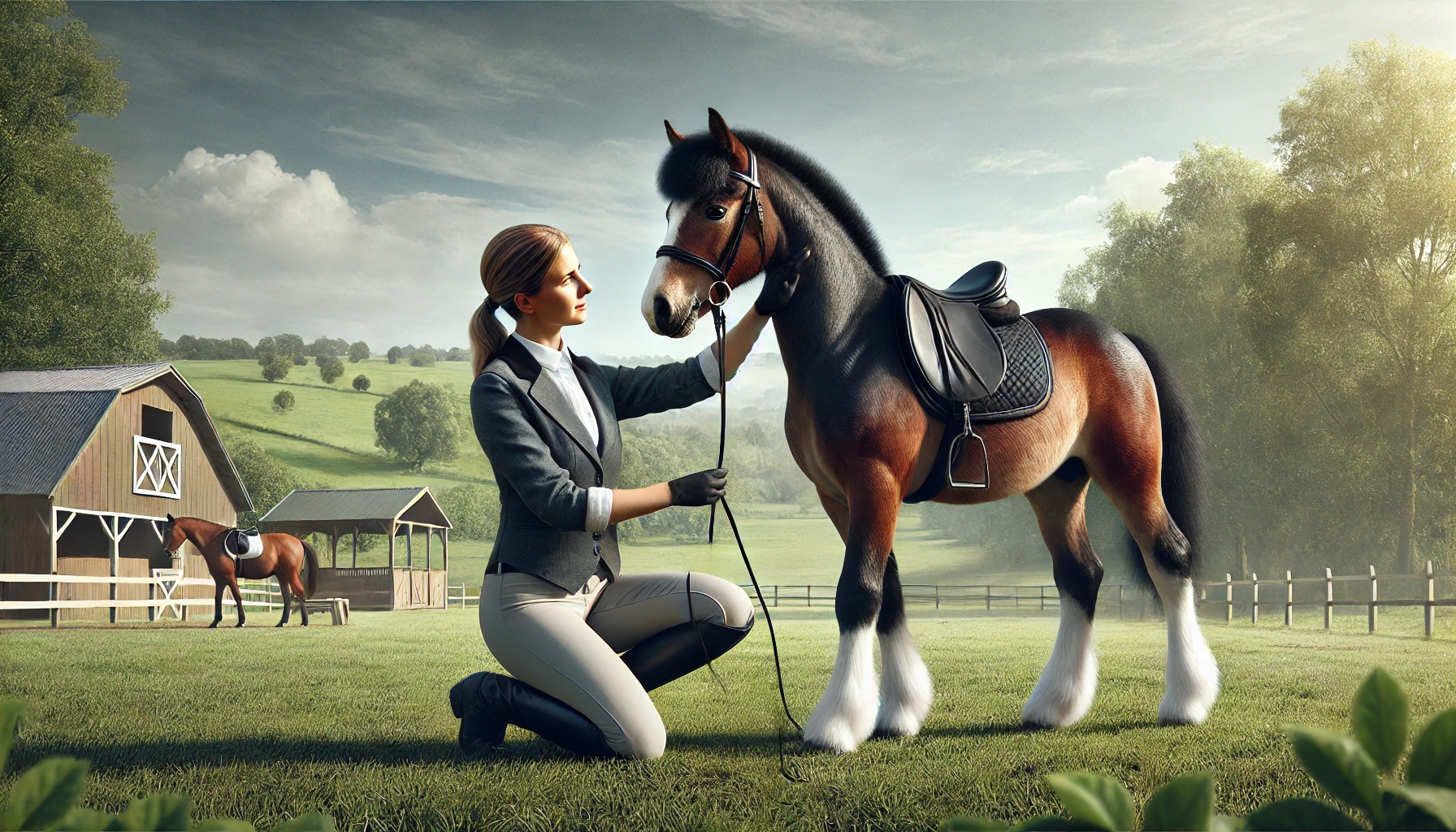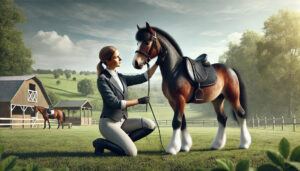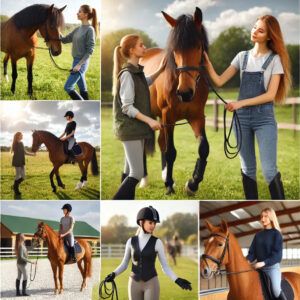Preparing for the Journey: Foundations of Training a Young Horse
Understanding the Mindset of a Young Horse
Training a young horse begins with understanding their mindset. Horses are naturally curious and social animals but also have a strong flight instinct. Recognizing this helps in shaping a training program that respects their nature. Young horses are like children—they learn best in environments where they feel safe and understood. Acknowledging their fears, anxieties, and natural behaviors is the first step toward building a solid foundation for training.
Establishing Trust and Respect Before Training
Before any actual training starts, it’s crucial to establish a bond of trust and respect with your horse. Spend time with them daily, engaging in activities that they enjoy and that help them feel safe in your presence. Grooming sessions, hand-feeding, and simply being around them without asking for anything can go a long way. Trust is a two-way street; your horse needs to trust you, and you need to trust them. Respect comes from consistent, gentle handling and clear communication. Never rush this phase; it’s the cornerstone of all future training.
Assessing the Horse’s Readiness for Training
Not every young horse is ready to start training at the same age. Assess their physical and mental readiness before introducing structured lessons. Look for signs that they are comfortable with basic handling and have a calm demeanor in various environments. Physically, they should be well-developed enough to handle the physical demands of training. Mentally, they should show signs of curiosity and a willingness to engage with you. Patience is key—if they’re not ready, give them more time.
Creating a Safe and Conducive Environment for Learning
A young horse’s learning environment should be as safe and stress-free as possible. This means having a secure, well-fenced area free from distractions and potential hazards. The space should be large enough for the horse to move around comfortably but not so large that you lose control. Ensure the ground is safe and free of obstacles that could cause injury. A calm, consistent routine helps young horses feel secure, which is vital for effective learning.
First Steps: Introduction to Groundwork
Importance of Groundwork in Young Horse Training
Groundwork is the foundation of all horse training. It establishes communication, builds confidence, and prepares the horse for ridden work. Through groundwork, you teach the horse to respond to cues and respect your space. It also helps them understand basic commands and develop good manners, making future training smoother and safer.
Basic Groundwork Exercises to Build Confidence
Start with simple exercises like leading, standing still, and yielding to pressure. These exercises teach the horse to move in response to your cues, building a language between you and the horse. Leading helps the horse learn to follow you calmly. Standing still reinforces patience and obedience. Yielding to pressure teaches the horse to move away from gentle pressure, an essential skill for later riding training.
Teaching Leading, Standing Still, and Yielding to Pressure
When teaching leading, use a long lead rope and a halter. Walk beside your horse, gently encouraging them to move forward with you. If they hesitate, apply slight pressure on the lead rope and release it as soon as they take a step. For standing still, use a clear cue like a hand signal or a verbal command. Reward them when they remain in place. Yielding to pressure involves applying gentle pressure to different parts of the horse’s body and rewarding them when they move away from it.
Using Positive Reinforcement to Encourage Progress
Positive reinforcement, like treats or verbal praise, can significantly enhance the training process. Horses learn faster and more willingly when they know there is a reward for their efforts. Ensure the rewards are given immediately after the desired behavior to create a clear connection between the action and the reward. This method fosters a positive learning environment and strengthens the bond between you and your horse.
Advancing with Care: Developing Essential Riding Skills
Gradual Introduction to Mounting and Riding
Once your horse is comfortable with groundwork, you can gradually introduce them to mounting and riding. Start by getting them accustomed to wearing a saddle and bridle. Let them feel the weight and sensation of the equipment. Then, practice mounting without actually riding—just getting on and off slowly and calmly. When your horse is relaxed with this, you can begin short, gentle rides.
Fundamentals of Walk, Trot, and Canter Under Saddle
Introduce the basics of walking, trotting, and cantering slowly. Begin with short sessions at a walk, gradually introducing the trot as your horse gains confidence. Always use clear, consistent cues, and reward progress with praise and gentle petting. The canter should be introduced only when your horse is comfortable and balanced at the walk and trot. Patience is key—each horse progresses at their own pace.
The Role of Consistency and Patience in Training Sessions
Consistency and patience are vital in training. Regular, short sessions are more effective than sporadic, long ones. Always end on a positive note, rewarding your horse for good behavior. Training should be a positive experience for your horse, reinforcing their trust and willingness to learn.
Monitoring Horse Behavior and Health During Training
Keep a close eye on your horse’s behavior and health throughout training. Look for signs of stress, fatigue, or discomfort. Changes in eating habits, weight, or behavior can indicate that your horse is struggling. Address any issues promptly and consult a vet if needed. A healthy, happy horse is a willing learner.
Cultivating Progress: Long-Term Training Strategies
Setting Achievable Goals and Milestones
Set realistic goals and milestones for your horse’s training. Break down the training process into small, manageable steps. Celebrate each achievement, no matter how small, to keep both you and your horse motivated. Clear goals help track progress and make adjustments as needed.
Adapting Training Approaches to the Individual Horse
Every horse is unique, and what works for one may not work for another. Be flexible and willing to adapt your training methods to suit your horse’s personality and learning style. Pay attention to their responses and adjust your approach accordingly. This personalized training leads to better results and a stronger bond.
The Importance of Varied, Ongoing Training and Exercise
Variety keeps training interesting for your horse and prevents boredom. Incorporate different exercises, environments, and activities into your routine. This not only keeps your horse engaged but also helps develop a well-rounded, adaptable animal. Regular exercise is also crucial for maintaining their physical health and fitness.
When to Seek Professional Guidance and Mentorship
There may come a time when you need expert advice. Don’t hesitate to seek guidance from professional trainers or mentors. They can provide valuable insights, techniques, and support to help you and your horse succeed. Training a young horse is a rewarding journey, but it’s also challenging. Having experienced help can make a significant difference.
Training a young horse requires patience, consistency, and a deep understanding of their nature. By laying a solid foundation, progressing carefully, and continuously adapting to your horse’s needs, you can cultivate a strong, trusting partnership. Enjoy the journey and celebrate every step forward!




